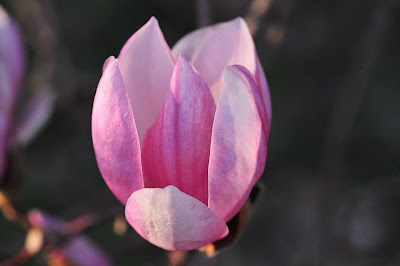Magnolia × soulangeana flowers are large, commonly 10–20 cm (4–8 in) across, and colored various shades of white, pink, and maroon. An American variety, 'Grace McDade' from Alabama, is reported to bear the largest flowers, with a 35 cm (14 in) diameter, white tinged with pinkish-purple. The exact timing and length of flowering varies between named varieties, as does the shape of the flower. Some are globular, others a cup-and-saucer shape.
This blog is primarily intended to display photos and comments about them.
02 April 2012
Magnolia x soulangeana
Magnolia × soulangeana flowers are large, commonly 10–20 cm (4–8 in) across, and colored various shades of white, pink, and maroon. An American variety, 'Grace McDade' from Alabama, is reported to bear the largest flowers, with a 35 cm (14 in) diameter, white tinged with pinkish-purple. The exact timing and length of flowering varies between named varieties, as does the shape of the flower. Some are globular, others a cup-and-saucer shape.
Subscribe to:
Post Comments (Atom)












No comments:
Post a Comment